You may prefer reading news stories, web articles, and books on your iPhone over listening to them in spoken form. Still, sometimes it’s necessary when driving, walking, cycling, cleaning, working, or performing other activities requiring a little multitasking. To help you out, Apple has a text-to-speech service on your iPhone — you just need to know how to find and set it up.
The built-in tool that can read on-screen content to you out loud is Speak Screen, an accessibility feature meant for those with visual impairment. But like many other accessibility tools, anyone with an iPhone can use them as they see fit.
In this case, you can make your iPhone audibly read all text it sees on your current screen. It can even automatically flip pages and keep reading aloud in supported apps. With it, you won’t have to use services like Speechify anymore or pay for an Apple News+ subscription to hear audio content. All of your e-books are just waiting to become audiobooks — for free — so there’s more need to spend tons of money on audiobooks if you already have the text-based version.
- Don’t Miss: The One Hidden Feature Every iPhone Owner Can Benefit From
Note that Speak Screen also works on iPad running the latest version of iPadOS.
Which Apps Support Speak Screen?
Speak Screen works best with first-party apps. It works for ebooks and text-based PDF files in Apple Books, stories in Apple News, webpages, PDFs, and other documents in Safari, text in Apple Notes, emails, PDFs, and other documents in Apple Mail, to name just a few apps.
You can also use Speak Screen in third-party digital book apps like Kindle, Nook, and Google Play Books; news apps like Flipboard, NPR, The New York Times, AP News, NewsBreak, SmartNews, USA Today, Reuters, The Wall Street Journal, Google News, CNN, BBC News, and Fox News; and pretty much any other text-based app you can think of.
It’s not a perfect tool in every app since it may read aloud content you would normally skip over, like page numbers, promotions, bylines, publication dates, etc. You may even hear buttons and ads being spoken. For Safari, you can try using a content blocker to block ads or enable Reader Mode before starting Speak Screen to limit unnecessary distractions. Other apps may have similar features.
Step 1: Enable Speak Screen
Go into the Settings app and open the “Accessibility” menu. Tap “Spoken Content” in the Vision section, then toggle on the “Speak Screen” switch. That’s all you have to do for now if you want to try the feature out immediately.
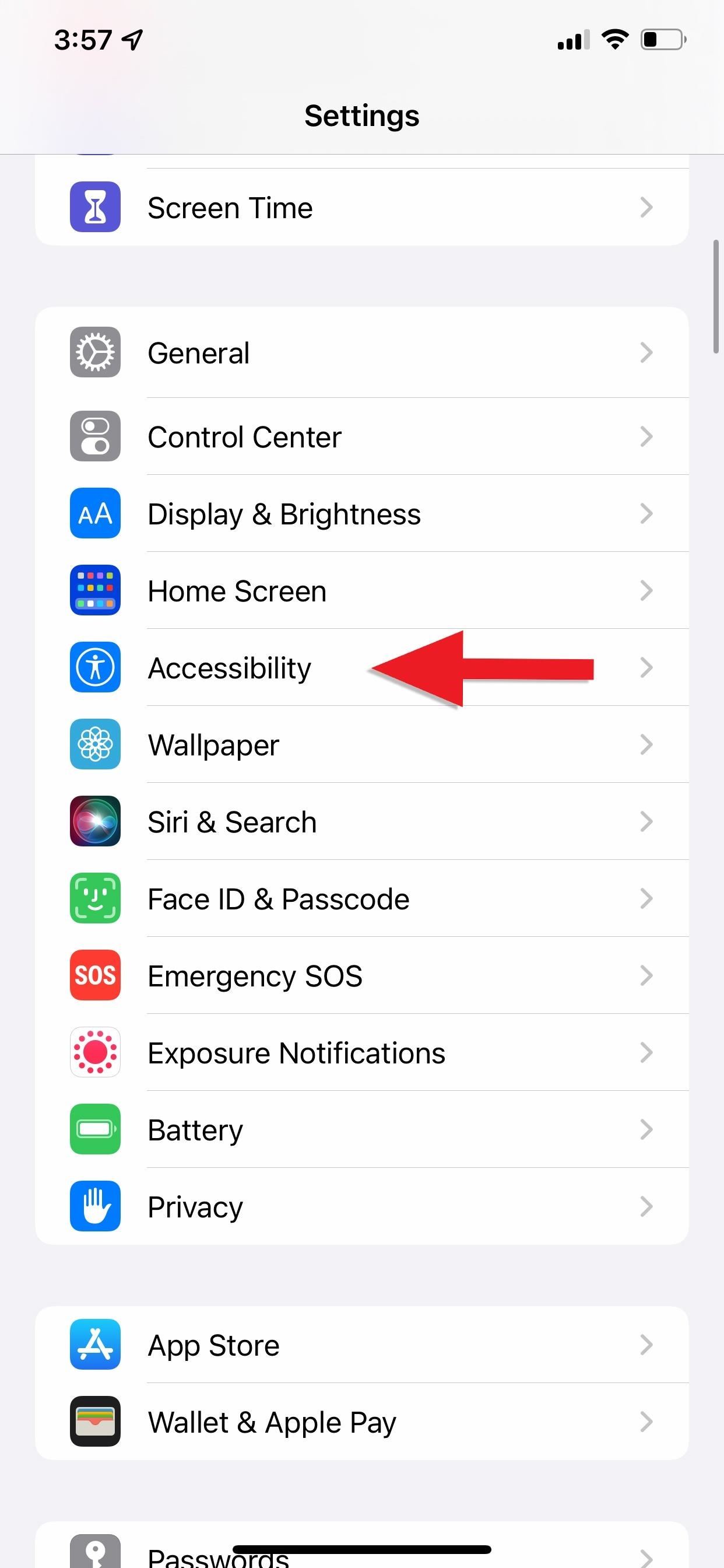
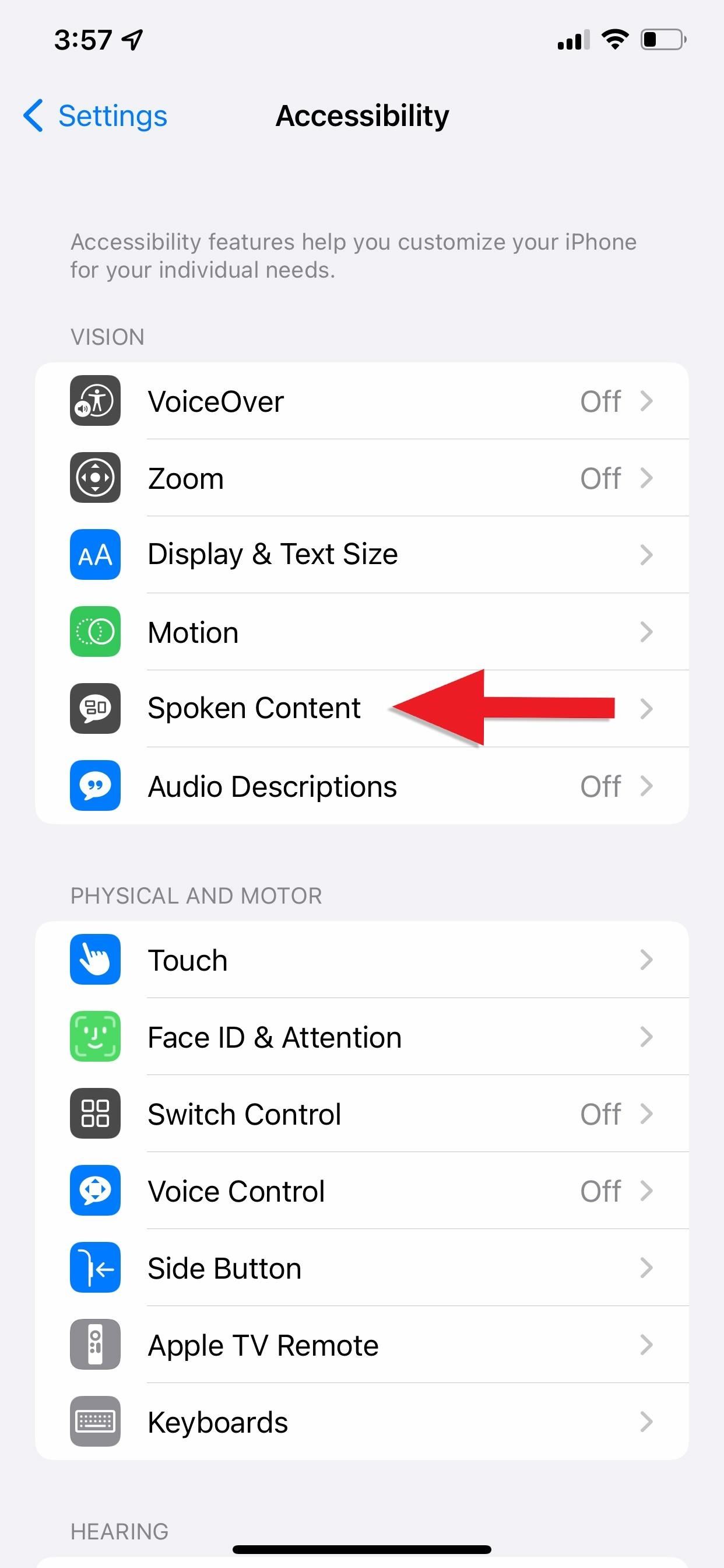
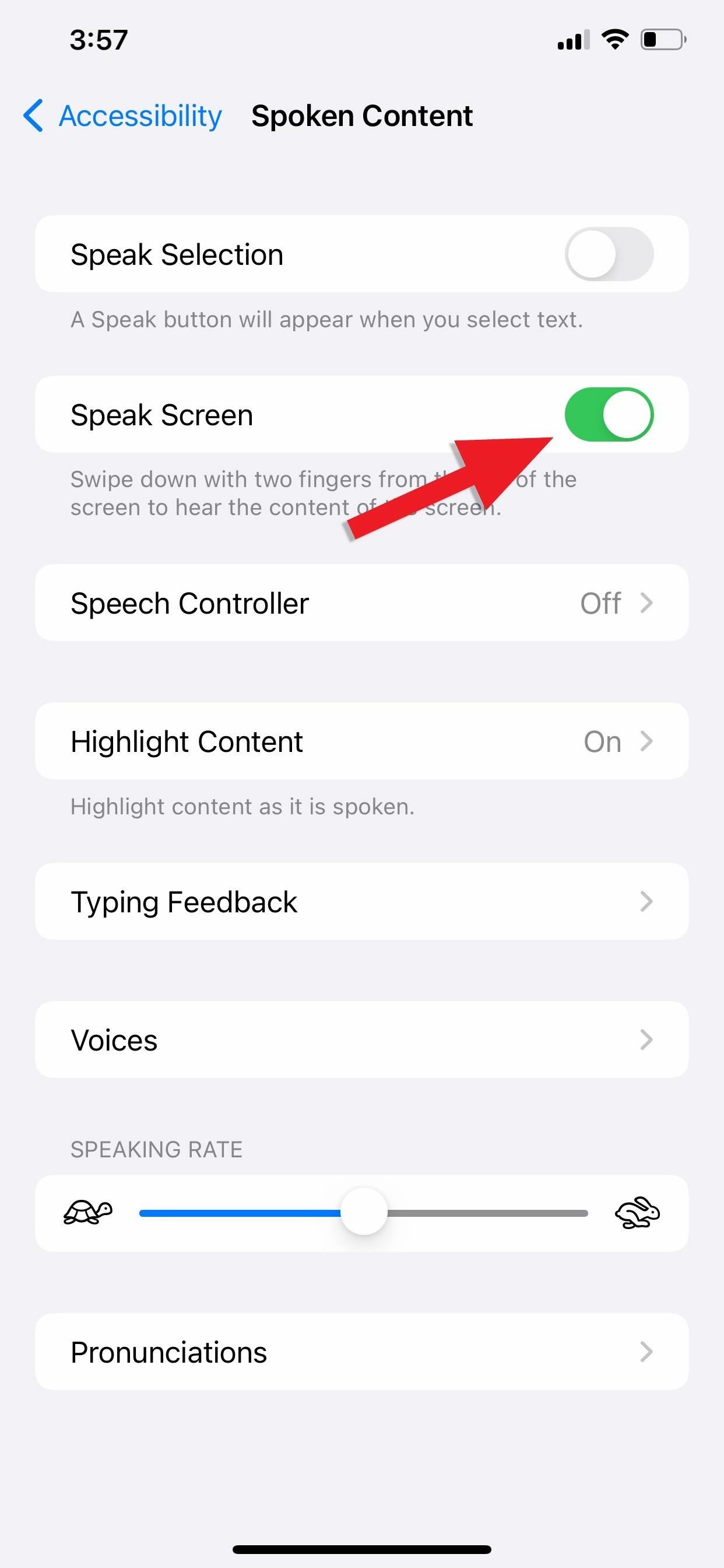
Step 2: Use Speak Screen to Read for You
First, open the book, PDF, or article you want your iPhone to read to you, then swipe down with two fingers from the top of the screen. Alternatively, you can tell Siri or Hey Siri to “speak screen.”
When Speak Screen activates, you’ll see the Speech Controller, which lets you change the speaking speed, pause, play, or stop the reading, and skip forward or backward. You can even use “Speak on Touch” by tapping the finger button, then the text you want to hear; In many cases, it will start reading at the beginning of whatever paragraph you touch.
The Speech Controller will automatically hide after a few seconds of not interacting with it. You can also hide it manually with the back button. The close button will cancel Speak Screen and remove the Speech Controller.
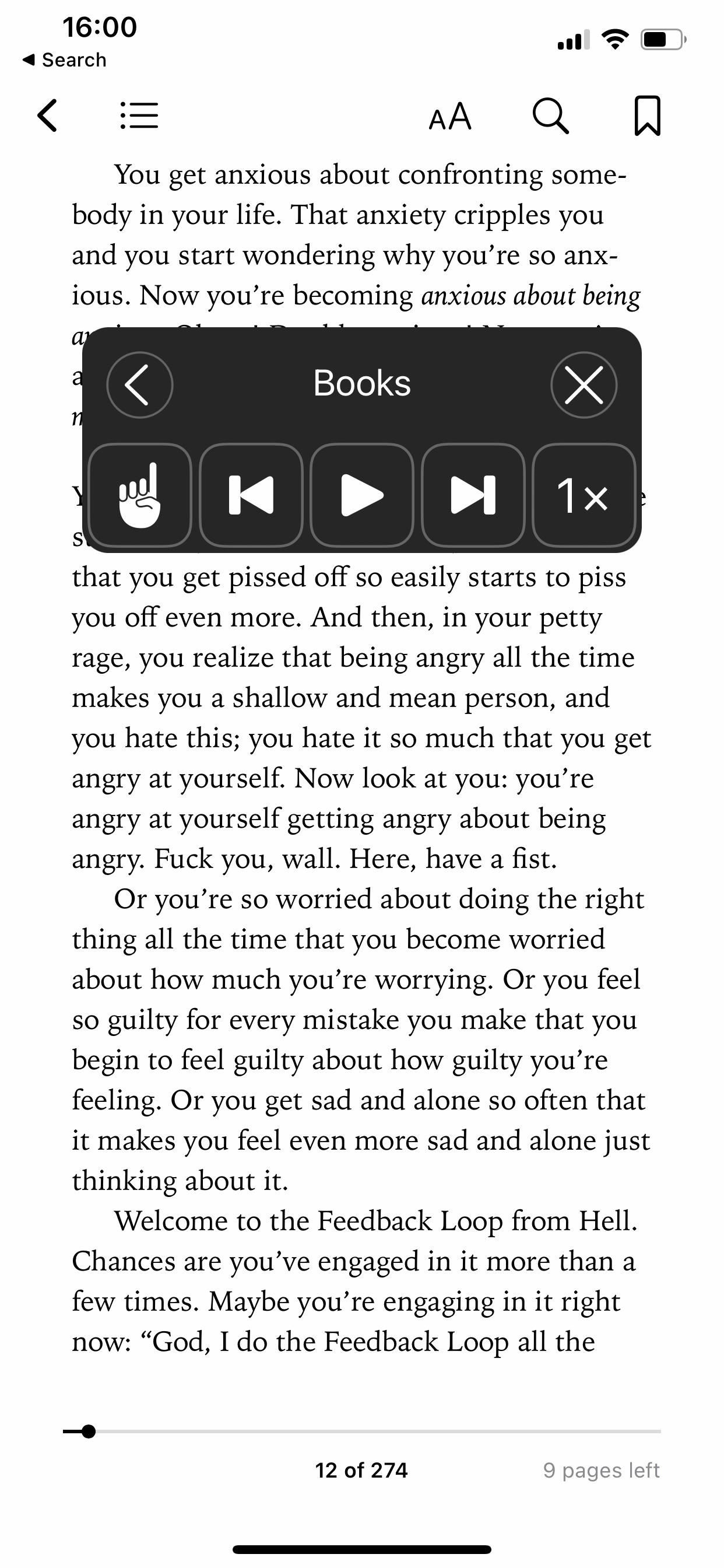
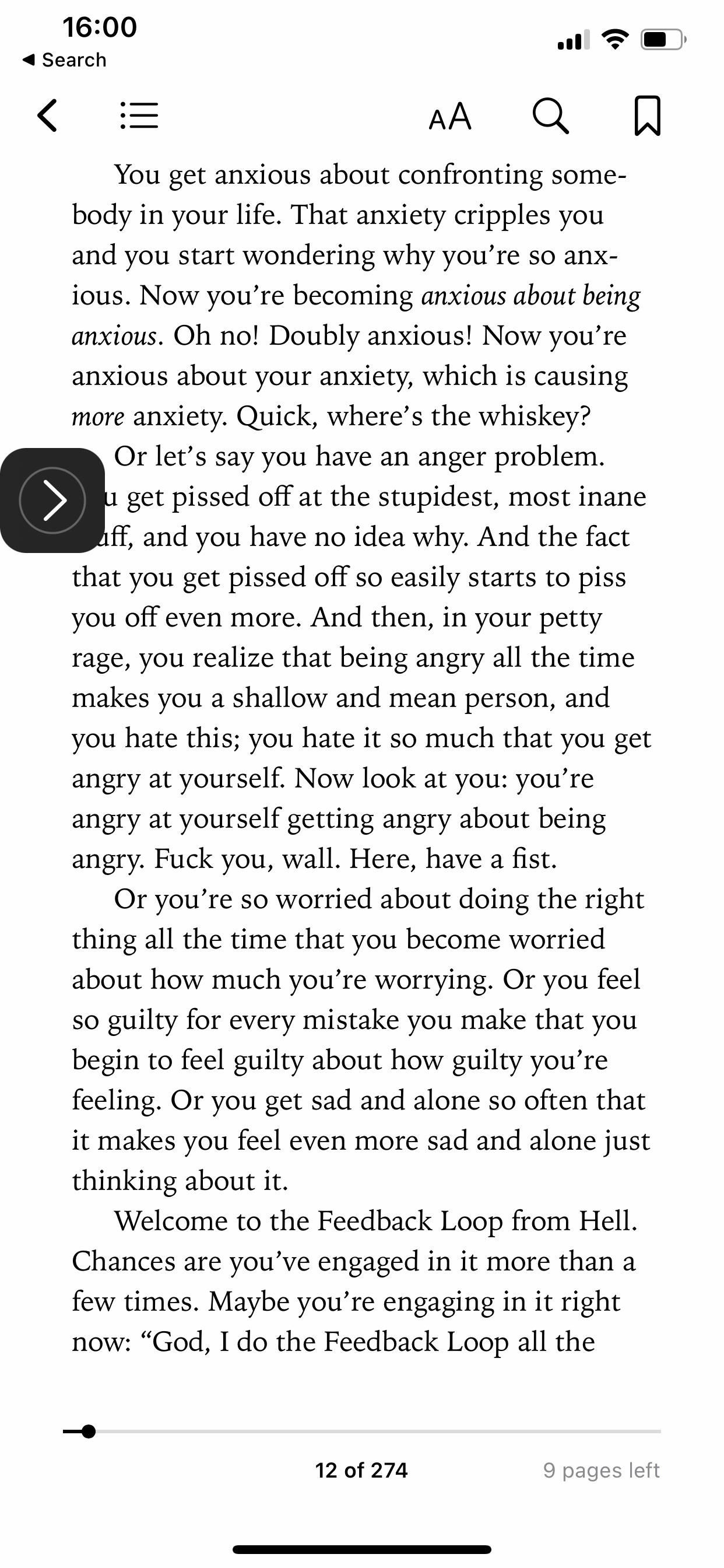
Step 3: Always Show the Speech Controller (Optional)
If you’ve ever used AssistiveTouch on your iPhone, you know that the AssistiveTouch button appears on top of every screen, ready for you to use at a moment’s notice. You can move the button, and its opacity can be low enough when idle so that it doesn’t draw your attention away from what you’re doing.
The Speech Controller can be set up just like the AssistiveTouch button. Go to Settings –> Accessibility –> Spoken Content –> Speech Controller, then toggle on the “Show Controller” switch.
- Don’t Miss: These Hidden Gestures Can Instantly Undelete Emails for You on Your iPhone or iPad
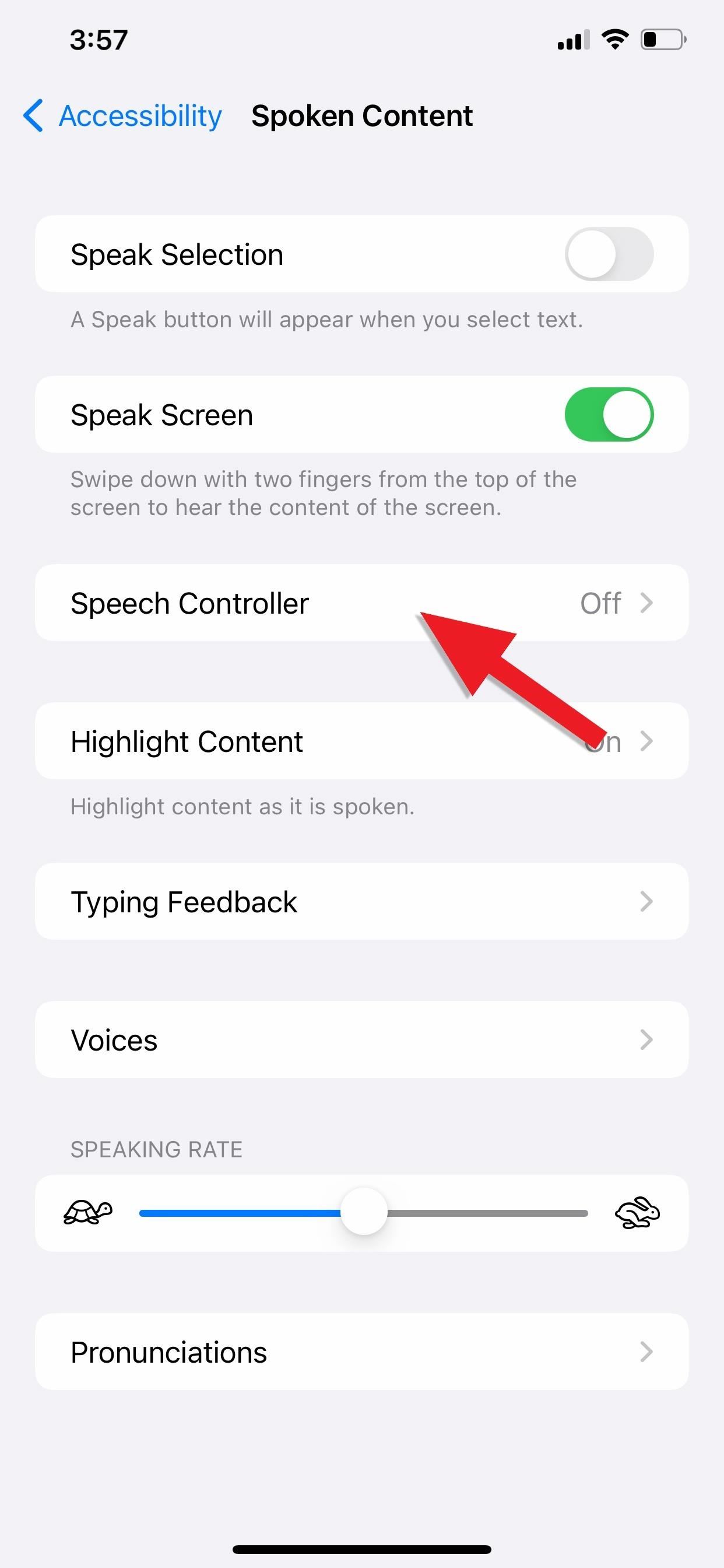
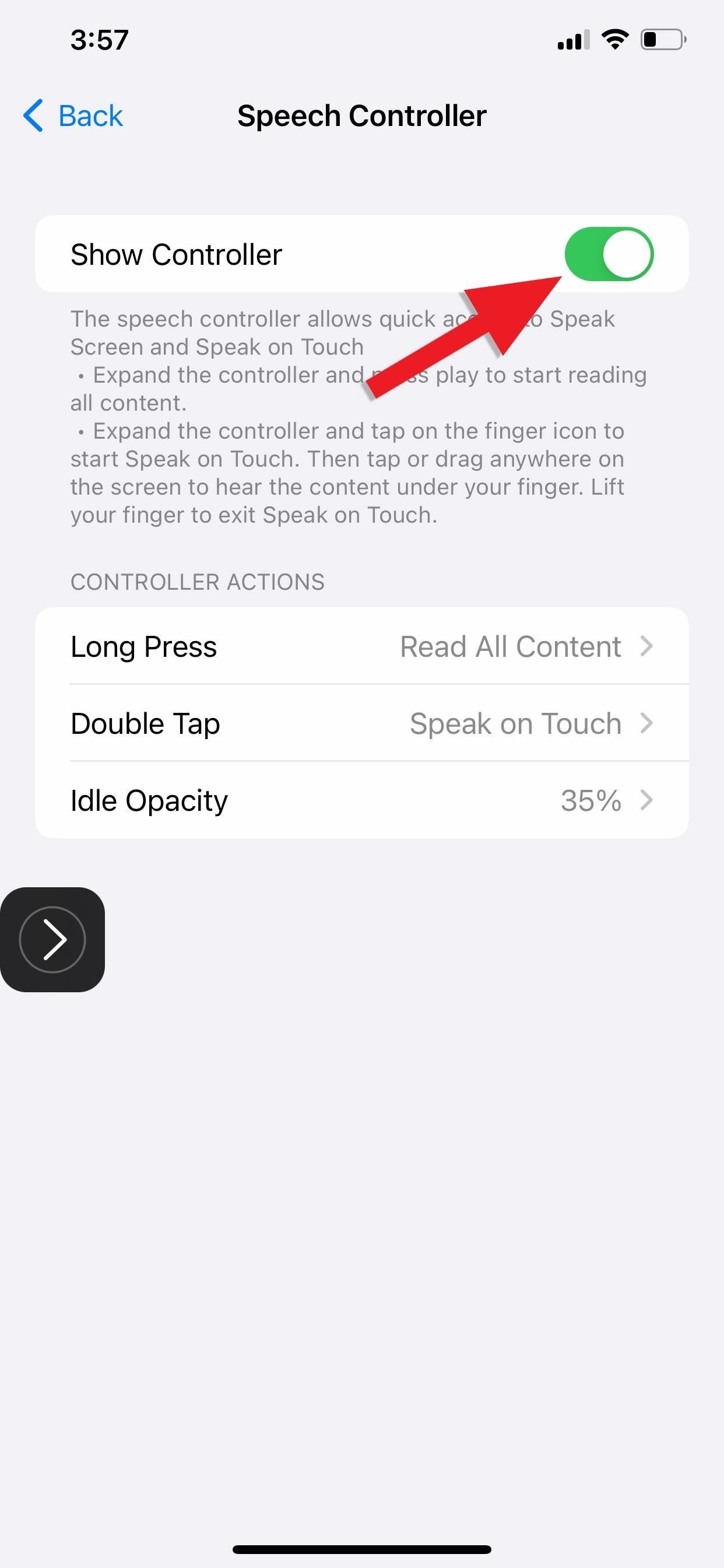
Step 4: Adjust Speech Controller’s Settings (Optional)
You can also tap “Idle Opacity” and adjust the slider, just like you can with AssistiveTouch, but the opacity goes as low as 5% compared to AssistiveTouch’s lowest 15% opacity.
While AssistiveTouch gives you three gestures (single-tap, double-tap, and long-press) to perform specific actions more quickly, Speech Controller only has double-tap and long-press options.
By default, double-tapping the Speech Controller button activates Speak on Touch, and you can tap the portion of the screen you want your iPhone to speak aloud. A long-press will read all the on-screen content. You can swap the triggers or disable them if you don’t like them.
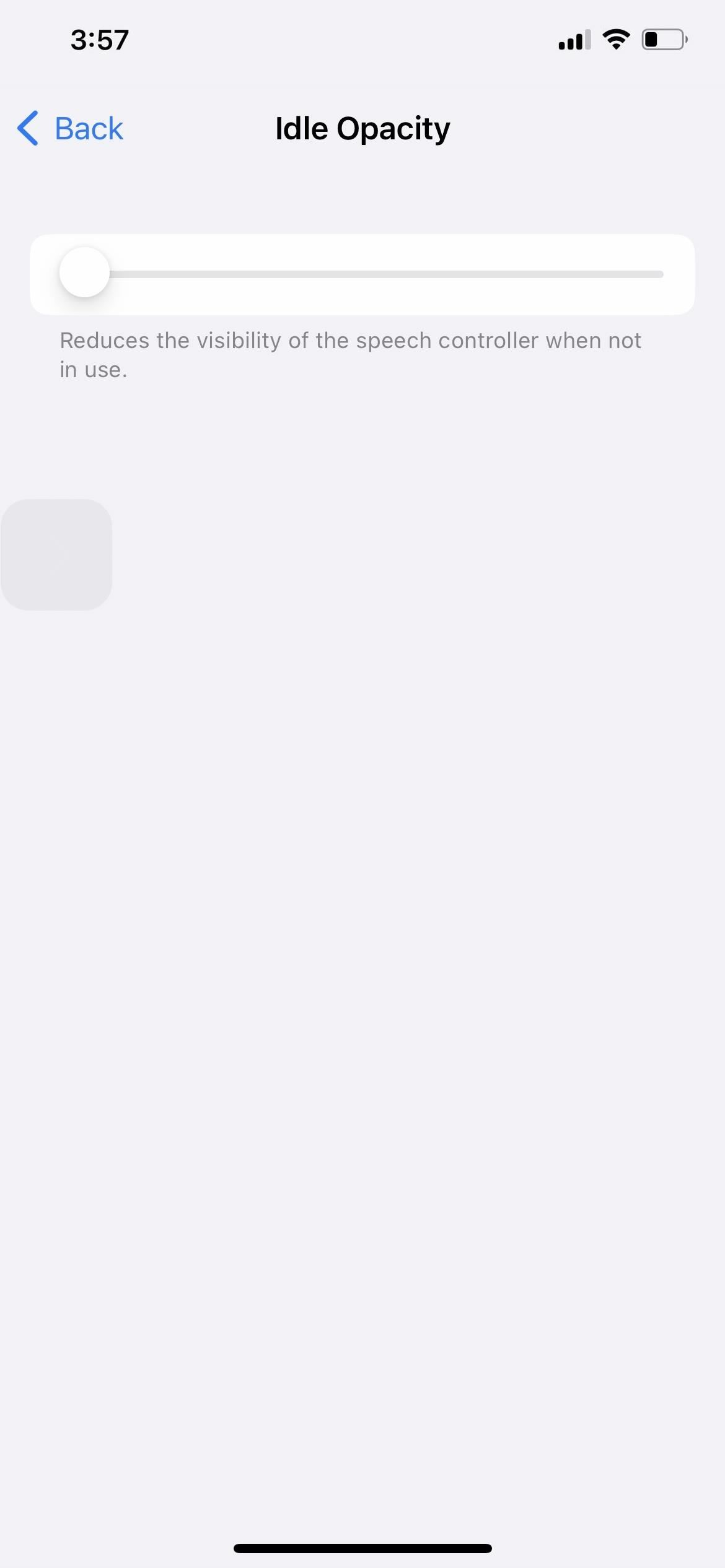
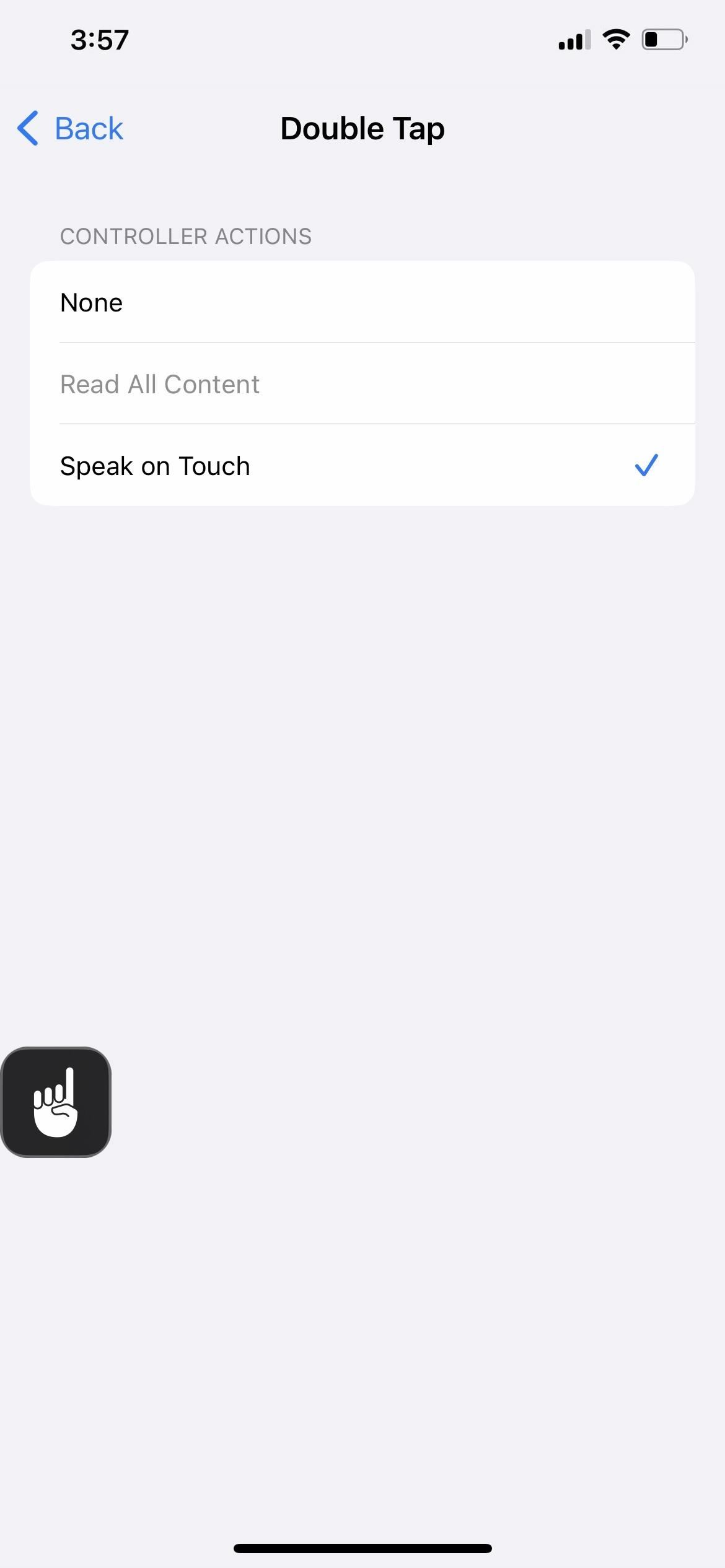
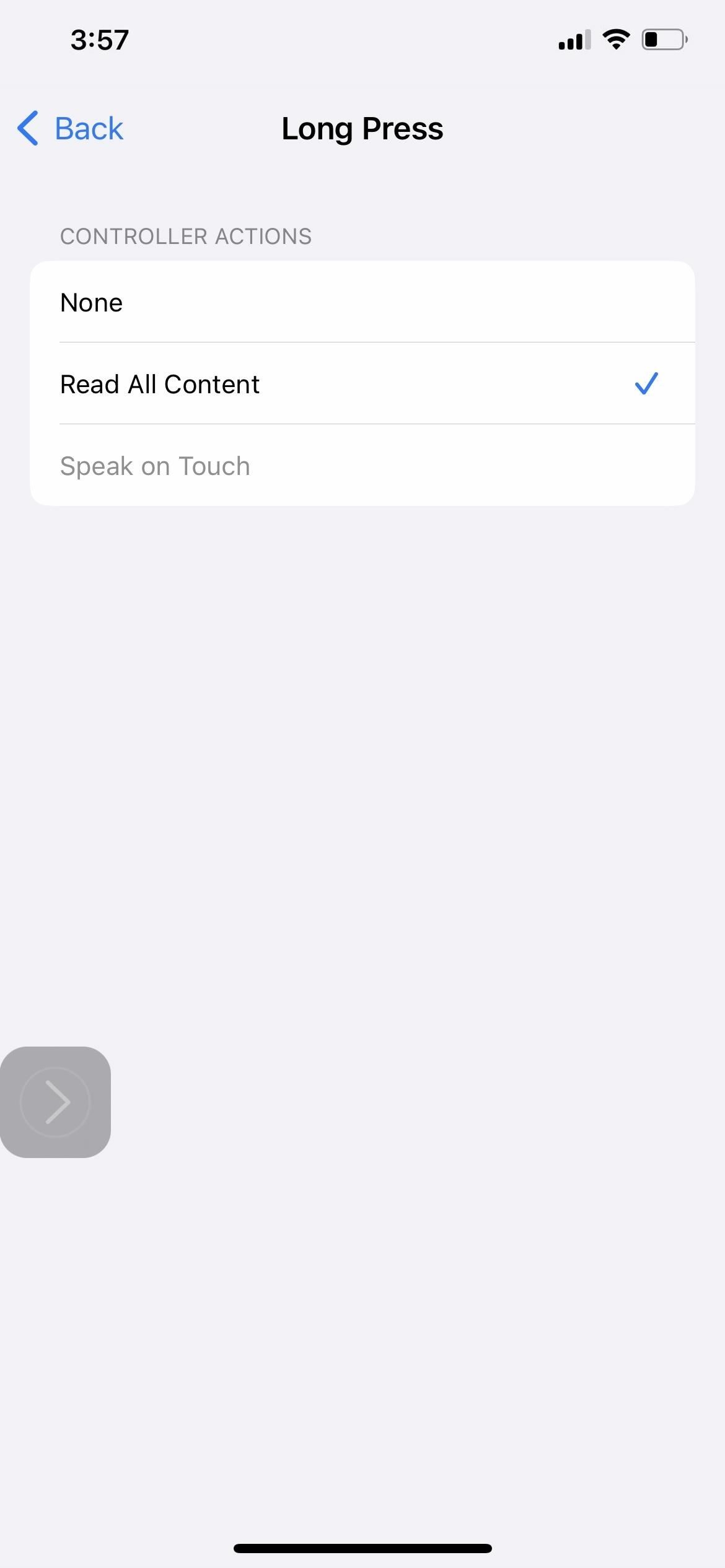
Step 5: Change Speak Screen’s Voice (Optional)
You can change the talkback voice if you’re not digging it. Go to Settings –> Accessibility –> Spoken Content, tap “Voices,” and you’ll see a list of all the supported languages. Each language has its own set of available voices, so tap the one you want, then choose the voice name for the appropriate dialect to preview and/or download it. Once downloaded, tap it again to select it and exit the menu.
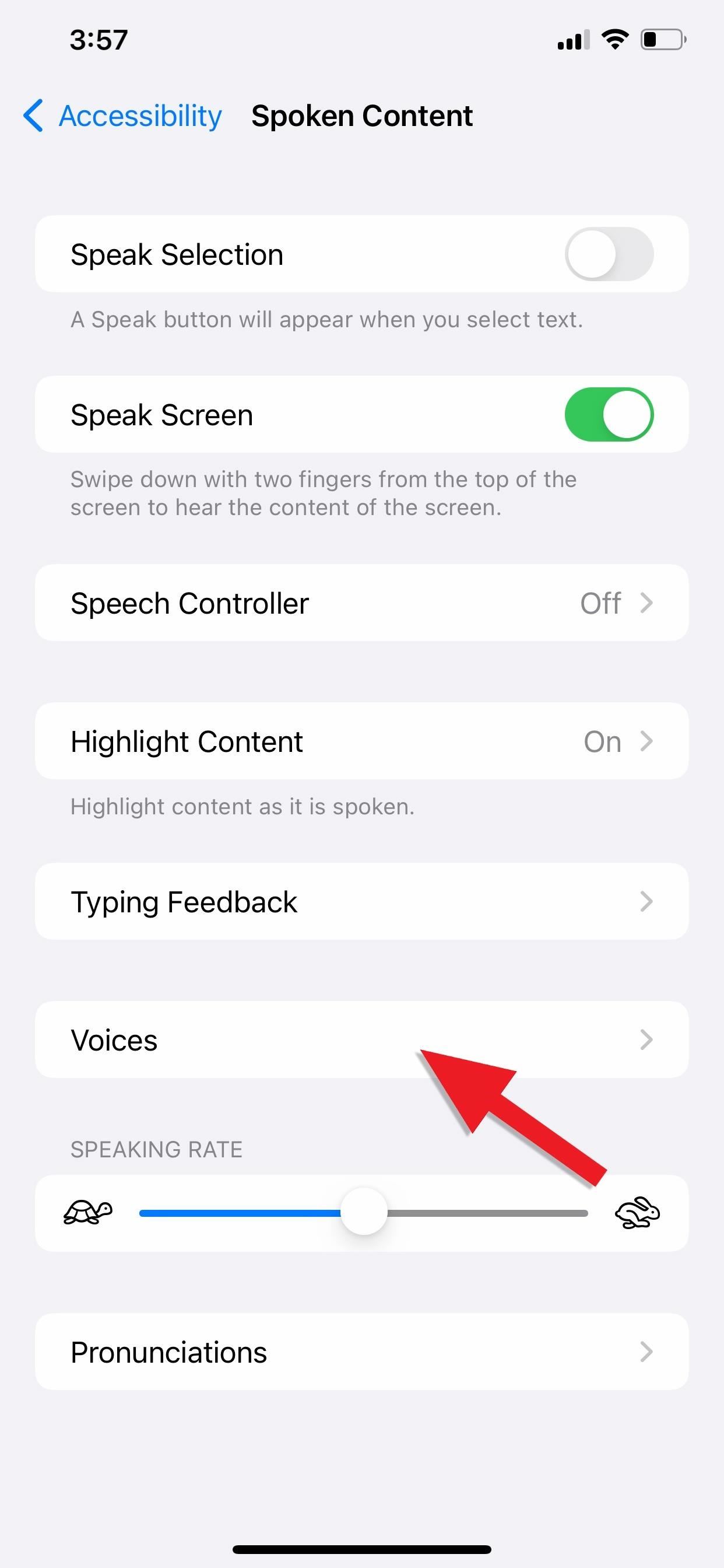
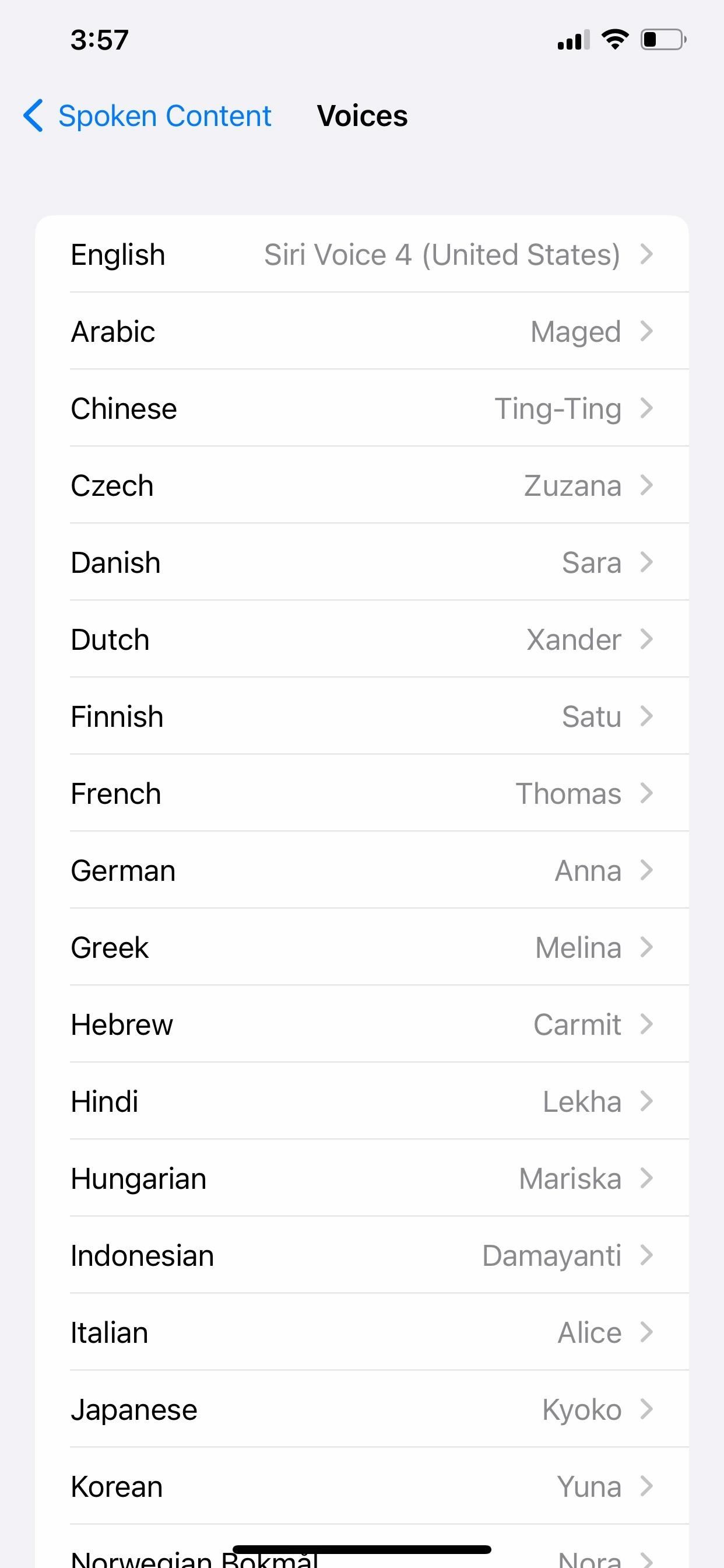
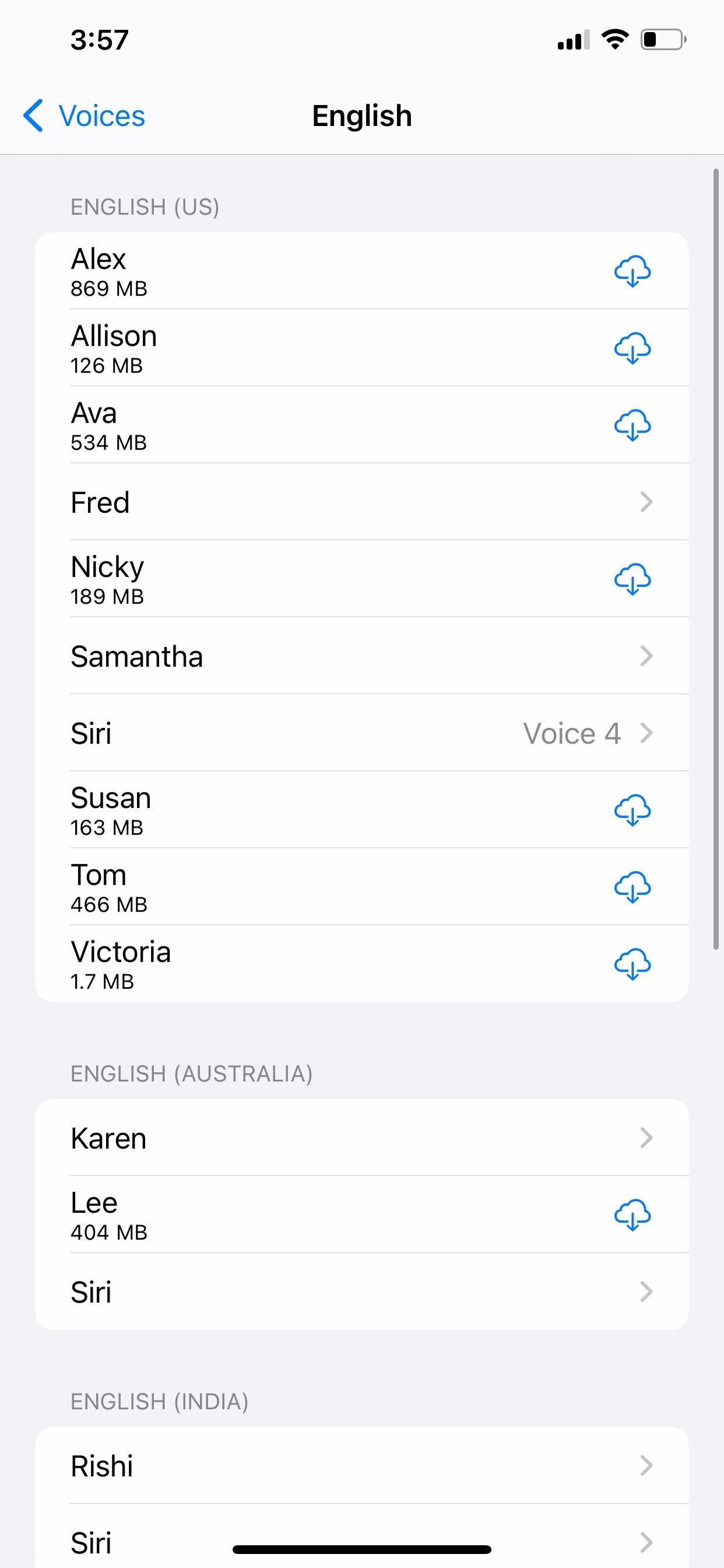
Step 6: Highlight Content as It’s Spoken (Optional)
Also available via Settings –> Accessibility –> Spoken Content is “Highlight Content,” which displays a brief perimeter around the selected section when using Speak on Touch. When it’s speaking the whole screen, it will highlight each word being read as it’s spoken.
Once enabled, you can choose to highlight only words, sentences, or words and sentences; change the sentence highlight style from underline to background color; and select new colors for words and/or sentences.
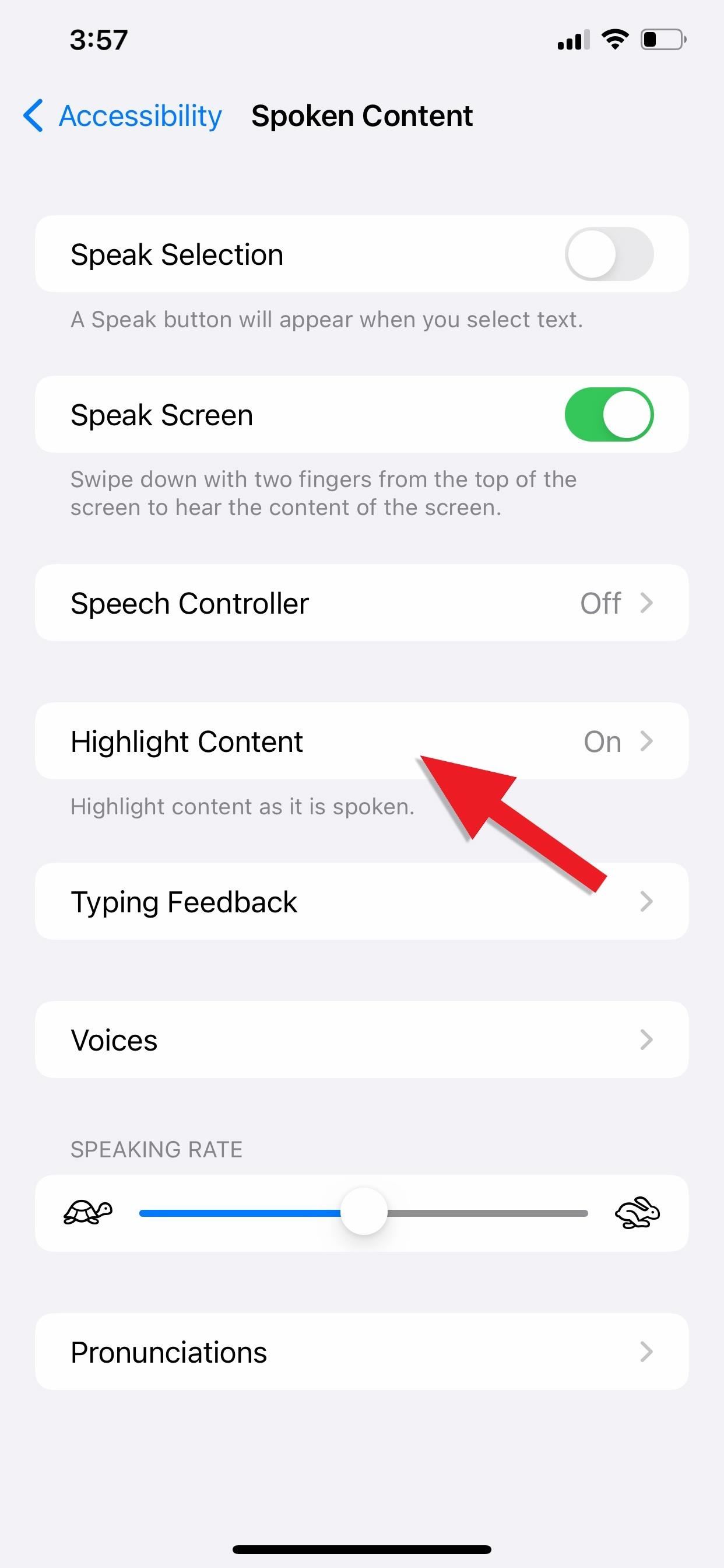
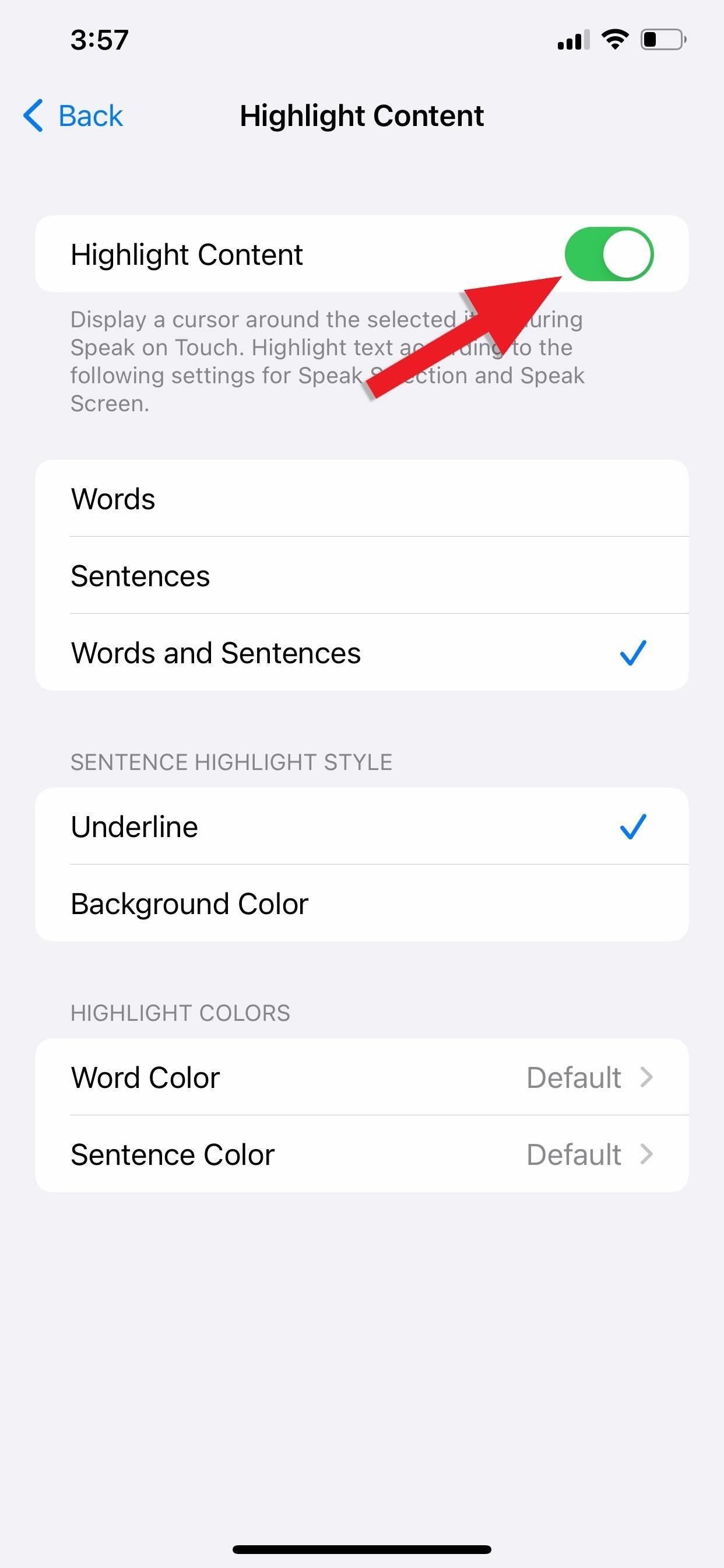
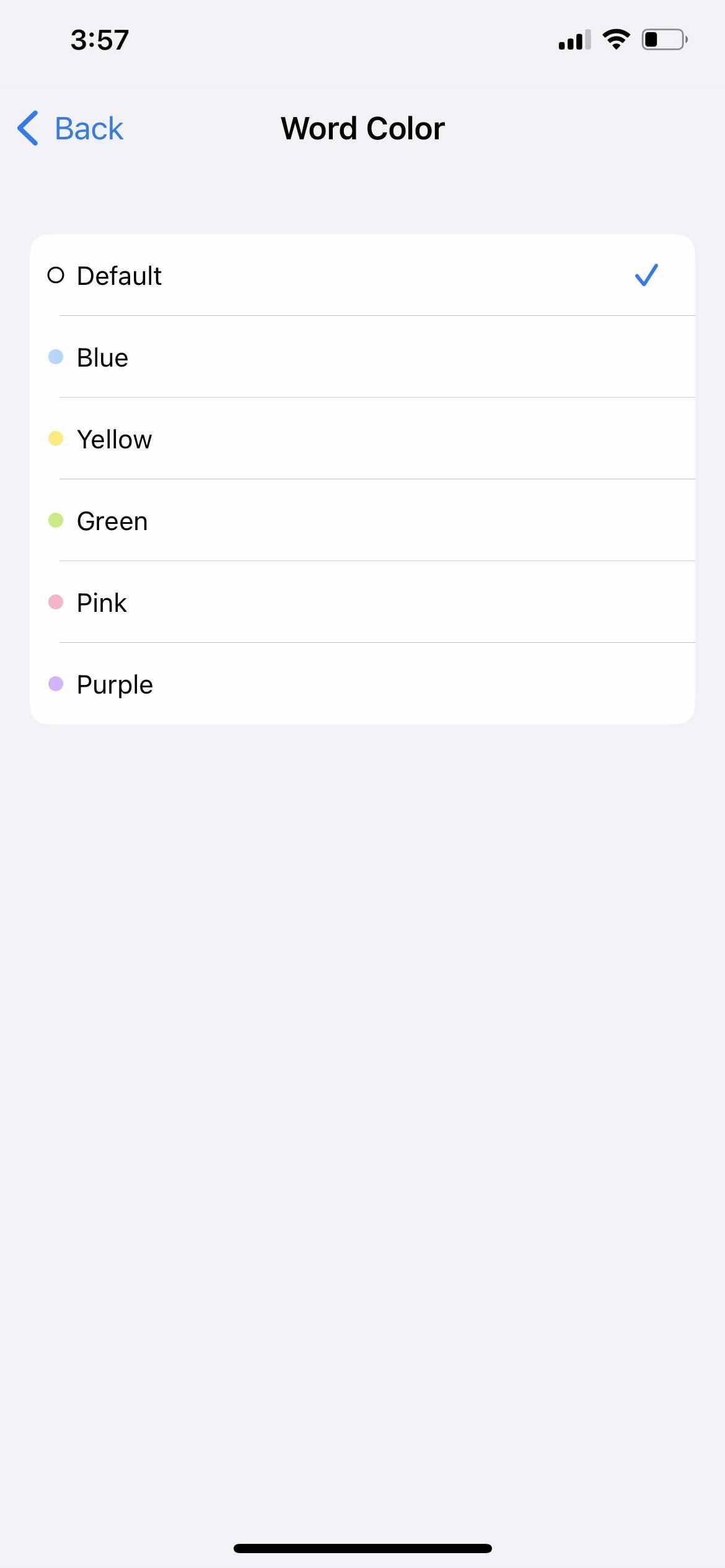
Usage Tips
- Remember that the two-finger swipe down is how you select what screen to read, so you have to swipe down for each new thing you want to read. If you make the Speech Controller persistent, you can long-press and double-tap to read the whole screen or open the Speak on Touch selector.
- If you read in multiple languages, you don’t have to worry about changing the talkback voice as it changes automatically as long as the text is in one of the supported languages. However, you can turn “Detect Languages” off in the Spoken Content settings to prevent that if you don’t like it.
- You can also change the Speaking Rate for how fast the voice reads aloud. You can do so with the slider in the Spoken Content settings or from the Speech Controller itself. Additionally, you can control the speaking rate for other languages via the Voices options.
- For apps with multiple pages to a story or book, Speak Screen can automatically flip the page itself and continue reading aloud to you. It works great in Apple Books, but your mileage may vary in other apps.
- PDFs with columned text may be read out of order sometimes, depending on which column it notices first. Try Speak on Touch when that happens.
- Enable reader views, ad blockers, and other reading tools available in apps and on websites to limit the amount of ads, buttons, and other distractions that may be read aloud.
Compatible Languages and Dialects
As of iOS 16, Spoken Content is available in more than 60 languages and locales, all listed below. Apple also states that Farsi is supported, but we haven’t seen it listed as an option yet.
- English (Australia)
- English (India)
- English (Ireland)
- English (Scotland, UK)
- English (South Africa)
- English (UK)
- English (US)
- English (Novelty)
- Arabic (World)
- Bangla (India)
- Basque (Spain)
- Bhojpuri (India)
- Bulgarian (Bulgaria)
- Catalan (Spain)
- Catalan (Valencian (Spain))
- Chinese Cantonese (Hong Kong)
- Chinese Mandarin (China Mainland)
- Chinese Mandarin (Liaoning, Mainland China)
- Chinese Mandarin (Shaanxi, Mainland China)
- Chinese Mandarin (Sichuan, Mainland China)
- Chinese Mandarin (Taiwan)
- Croatian (Croatia)
- Czech (Czechia)
- Danish (Denmark)
- Dutch (Belgium)
- Dutch (Netherlands)
- Finnish (Finland)
- French (Belgium)
- French (Canada)
- French (France)
- Galician (Spain)
- German (Germany)
- Greek (Greece)
- Hebrew (Israel)
- Hindi (India)
- Hungarian (Hungary)
- Indonesian (Indonesia)
- Italian (Italy)
- Japanese (Japan)
- Kannada (India)
- Korean (South Korea)
- Malay (Malaysia)
- Marathi (India)
- Norwegian Bokmål (Norway)
- Polish (Poland)
- Portuguese (Brazil)
- Portuguese (Portugal)
- Romanian (Romania)
- Russian (Russia)
- Shanghainese (Mainland China)
- Slovak (Slovakia)
- Slovenian (Slovenia)
- Spanish (Argentina)
- Spanish (Chile)
- Spanish (Columbia)
- Spanish (Mexico)
- Spanish (Spain)
- Swedish (Sweden)
- Tamil (India)
- Telugu (India)
- Thai (Thailand)
- Turkish (Turkey)
- Ukrainian (Ukraine)
- Vietnamese (Vietnam)
Just updated your iPhone? You’ll find new emoji, enhanced security, podcast transcripts, Apple Cash virtual numbers, and other useful features. There are even new additions hidden within Safari. Find out what’s new and changed on your iPhone with the iOS 17.4 update.
“Hey there, just a heads-up: We’re part of the Amazon affiliate program, so when you buy through links on our site, we may earn a small commission. But don’t worry, it doesn’t cost you anything extra and helps us keep the lights on. Thanks for your support!”











